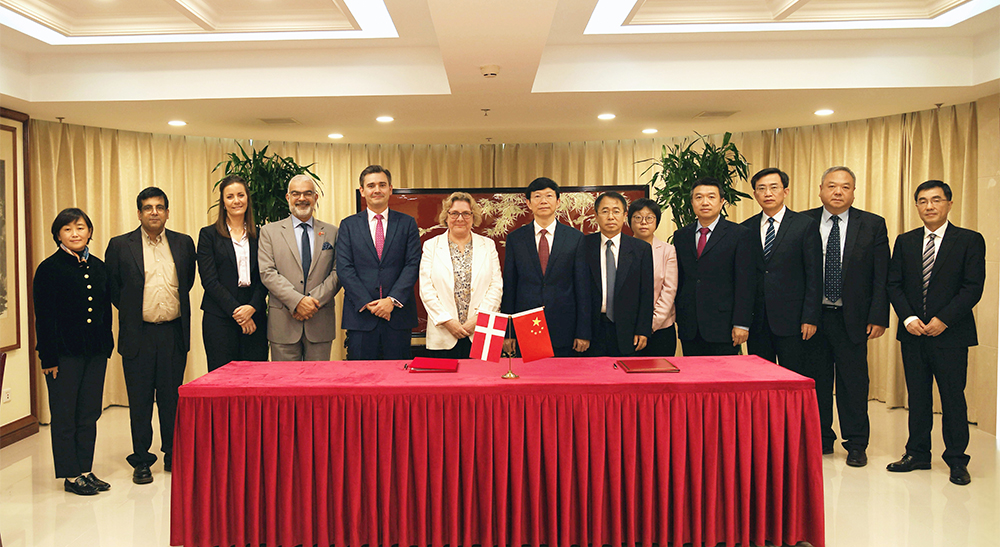男性年龄增加会影响精子异常发生率吗?
时间:2024-01-12 21:05:15 热度:37.1℃ 作者:网络
欧洲人类生殖与胚胎学学会(ESHRE)年会是生殖医学领域规模最大、最具影响力的年度国际学术会议之一,覆盖生殖医学领域所有专业。2023年ESHRE年会已经召开,生殖医学论坛精选了众多会议精华内容进行了翻译,希望给大家带来最新鲜、最前沿的生殖医学资讯。
Study question
研究问题
Does advancing male age influence the frequency of occurrence of sperm abnormalities?
男性年龄的增加是否会影响精子异常的发生率?
Summary answer
结论
Advancing male age was associated with increased incidence of certain head and tail defects – elongated head, nuclear vacuoles, and coiled tail.
男性年龄的增长与某些头部和尾部缺陷(如细长头部、核空泡和卷曲尾部)的发生率增加有关。
What is known already
已知情况
Evaluation of male reproductive potential is based mainly on sperm motility and sperm morphology. Morphological sperm features serve as a reliable indicator in predicting the fertilizing capacity of sperm. Nowadays, there are various sperm selection techniques based on sperm morphology. However, advancing male age has been associated with decrease in semen quality. Therefore, the aim of this study was to examine the effect of aging on the frequency of occurrence of sperm abnormalities.
男性生殖潜力的评估主要基于精子活力和精子形态。精子形态特征是预测精子受精能力的可靠指标。目前,已有各种基于精子形态的精子选择技术。然而,男性年龄的增长与精液质量的下降有关。因此,本研究旨在探讨年龄增长对精子异常发生率的影响。
Study design, size, duration
研究设计、样本量和持续时间
This retrospective study includes 3980 men aged between 15 and 72 years, with a mean of 36 years. Semen samples were collected between October 2015 and December 2022 in a private in-vitro hospital. Men were divided into three groups according to their age: 1) from 15 to 25 years (n = 144), 2) from 25 to 45 years (n = 3447), and 3) over 45 years (n = 393).
这是一项回顾性研究,纳入3980名年龄在15岁至72岁之间的男性,平均年龄36岁。精液样本于2015年10月至2022年12月期间在一家私人医院收集。根据年龄将男性分为三组:1)15至25岁(n=144),2)25至45岁(n=3447),3)45岁以上(n=393)。
Participants/materials, setting, methods
研究对象/材料、设定、方法
Sperm morphology was evaluated according to the Kruger’s strict criteria. Totally, 23 types of abnormalities were determined. Head defects included small, large, amorphous, elongated, round, pear-shaped, double, detached head, acephalic cells, small or large acrosomal areas, and spermatozoa without acrosome. Midpiece defects included thick, thin, bent, asymmetric midpiece and cytoplasmic droplets. Tail defects included short, coiled, and double tail. Acrosomal vacuoles and nuclear vacuoles were also evaluated. Statistics: ANOVA, followed by LSD post-hoc test.
精子形态的评估是根据克鲁格的严格标准。总共确定了23种异常类型。头部缺陷包括小、大、无定形、细长、圆形、梨形、双头、头分离、无头细胞、小或大的顶体区域和无顶体的精子。中段缺陷包括厚、薄、弯曲、不对称的中段和胞质滴。尾部缺陷包括短、卷曲和双尾等。还评估了顶体空泡和核空泡。统计学:方差分析,随后进行LSD事后检验。
Main results and the role of chance
主要结果和机会性概率
The results are presented as mean±SD. Among the studied population the percentage of normozoospermic men was 44%, while the percentage of teratozoospermic semen samples was 56%. The total mean frequencies of occurrence of head, midpiece and tail abnormalities were 85.9±7.9%, 34.1±12.8% and 4.7±5.1%, respectively. Only 3 (13%) of the analysed 23 types of sperm abnormalities were significantly more common with advanced male age – elongated head, nuclear vacuoles, and coiled tail.The frequency of occurrence of elongated head differed significantly between the age groups 1-2, and 1-3: 11.38±10.1% vs. 13.79±11.58%, p = 0.015, and 11.38±10.1% vs. 14.4±11. 8%, p = 0.008, respectively. No difference in the incidence of this defect was observed between groups 2 and 3 (p > 0.05).Furthermore, the frequency of nuclear vacuoles significantly increased with age as observed in the following age group comparisons 1-2, 1-3, and 2-3: 4.28±4.93% vs. 5.4±6.1%, p = 0.04, 4.28±4.93% vs. 6.48±7.89%, p < 0.001, and 5.4±6.1% vs. 6.48±7.89%, р=0.001, respectively.Finally, coiled tail was observed more frequently in age groups 2 and 3 compared to age group 1: 13.79±11.58% vs. 11.38±10.1%, p < 0.001, and 14.4±11. 8% vs. 11.38±10.1%, p < 0.001, respectively.
本实验结果以均值±标准差表示。在研究人群中,正常精子症男性占比44%,而畸形精子症占比56%。精子头部、中段和尾部异常的发生率分别为85.9±7.9%、34.1±12.8%和4.7±5.1%。在分析的23种精子异常中,仅有3种(13%)与男性年龄增长有关——细长头部、核空泡和卷曲尾部。细长头部的发生率在年龄组1-2和1-3之间有显著差异:11.38±10.1% 对比 13.79±11.58%,p=0.015,和11.38±10.1% 对比14.4±11.8%,p=0.008。第2组和第3组之间观察到该缺陷的发生率无差异(p>0.05)。此外,核空泡的发生率随着年龄的增长而显著增加,如以下年龄组比较所示:1-2、1-3和2-3:4.28±4.93% 对比 5.4±6.1%,p=0.04,4.28±4.93% 对比 6.48±7.89%,p<0.001,和5.4±6.1% 对比 6.48±7.89%,p<0.001。最后,与年龄组1相比,年龄组2和3中观察到卷曲尾部的频率更高:分别为13.79±11.58% 对比 11.38±10.1%,p < 0.001,和14.4±11.8% 对比 11.38±10.1%,p < 0.001。
Limitations, reasons for caution
局限性及审慎理由
This is a single-institution retrospective study.
这是一项单机构回顾性研究。
Wider implications of the findings
研究结果的更深层次意义
The findings of this study showed that aging is associated with an increased percentage of several sperm abnormalities: spermatozoa with elongated head, nuclear vacuoles, and coiled tail. Further studies are required to clarify the negative impact of aging on spermatogenesis leading to morphological defects.
这项研究的发现表明,年龄增长与几种精子异常的比例增加有关:细长头部、核空泡和卷曲尾部。需要进一步研究以阐明衰老对精子发生的负面影响,进而导致形态缺陷。
文章来源:M Handzhiyska, D Parvanov, R Ganeva, M Ruseva, V Georgieva, S Gogeva, D Velikova, G Stamenov, P-020 Association between male age and the frequency of sperm abnormalities, Human Reproduction, Volume 38, Issue Supplement_1, June 2023, dead093.387, https://doi.org/10.1093/humrep/dead093.387


